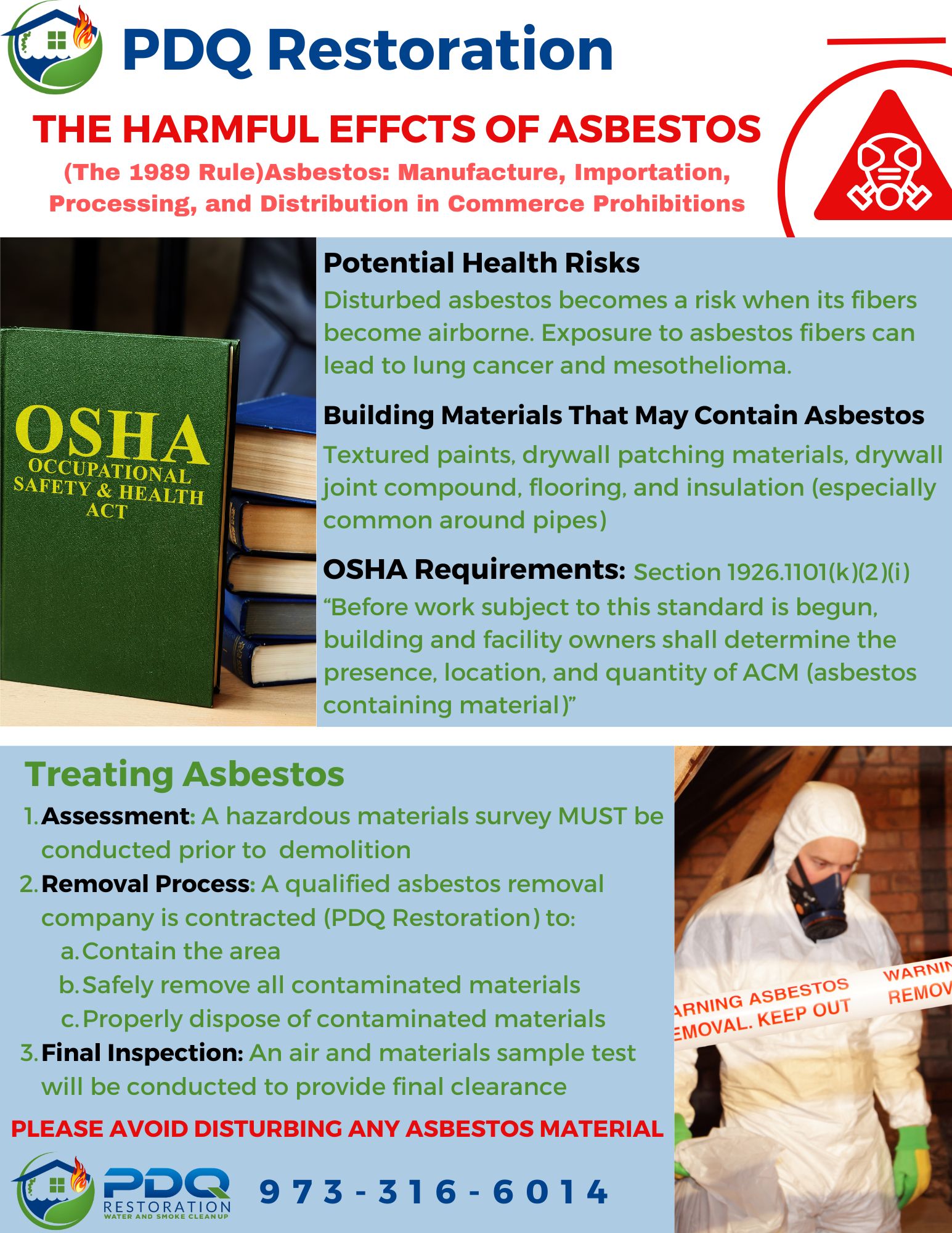When Water Strikes: 4 Scenarios Requiring Asbestos Removal
Water damage can turn your home into a wet and damp environment overnight, creating the perfect conditions for mold growth and other hidden hazards. Among these hazards, asbestos poses a significant threat, especially in older homes. Even if asbestos has been sealed by another layer of flooring, it is crucial to test for and remove it in specific water damage scenarios to maintain a clean and sanitized living space. Here are four examples illustrating when asbestos removal becomes necessary during water damage restoration.

1. Flooding in Older Homes
In older homes, asbestos was commonly used in building materials such as pipe insulation, flooring, and ceiling tiles. When flooding occurs, the excessive moisture can weaken the integrity of these asbestos-containing materials (ACMs). For instance, a soaked ceiling tile in a bathroom or a damp pipe insulation near a sink can release asbestos fibers into the air. Even if the asbestos was previously sealed, the dampness and high humidity from flooding can cause the sealed layers to degrade, necessitating professional asbestos removal to prevent airborne contamination and ensure a sanitized environment.
2. Burst Pipes in Kitchens and Bathrooms
Burst pipes are a common cause of water damage in kitchens and bathrooms, where sinks and toilets are often located. In these areas, asbestos might be present in materials such as grout, floor tiles, or backing on cabinets. The sudden influx of water can cause these materials to crumble or delaminate, releasing asbestos fibers. For example, a wet backsplash behind a kitchen sink or a damp grout line around a bathroom toilet can disturb asbestos-containing materials. In such cases, it is imperative to remove the compromised asbestos to maintain air quality and prevent health risks.
3. Leaky Basements and Crawl Spaces
Basements and crawl spaces are particularly vulnerable to moisture and water intrusion, often harboring asbestos in insulation, wallboard, and flooring. Persistent leaks or high humidity levels can lead to damp conditions that degrade asbestos-containing materials. For instance, a damp basement wall or a wet crawl space floor can facilitate the breakdown of asbestos materials, releasing harmful fibers. Removing asbestos in these damp environments is essential to ensure that the space remains clean and free from asbestos-related health hazards.
4. Post-Fire Water Damage Restoration
Fire damage restoration often involves using large amounts of water to extinguish flames, leading to significant water damage. In homes with asbestos-containing materials, the combination of fire and water can be particularly problematic. For example, water used to douse a fire in a bathroom can saturate asbestos insulation around plumbing fixtures or ceiling tiles, increasing the risk of asbestos fiber release. During smoke damage cleanup and soot removal, ensuring that asbestos is properly managed is crucial for maintaining a clean and sanitized environment. In such scenarios, asbestos testing and removal are necessary to address the compounded effects of fire and water damage.
Conclusion
Water damage presents numerous challenges, particularly in homes with asbestos-containing materials. Understanding when asbestos must be tested and removed is essential for effective restoration and maintaining a safe living environment. Whether dealing with flooding, burst pipes, leaky basements, or post-fire water damage, professional asbestos removal ensures that your home remains clean and sanitized, free from the hidden dangers of asbestos exposure. Protect your health and home by addressing asbestos hazards promptly and thoroughly during water damage restoration.
For expert water damage restoration and safe asbestos removal, trust the professionals at PDQ Fire & Water Damage to help you maintain a healthy and hazard-free home.
















